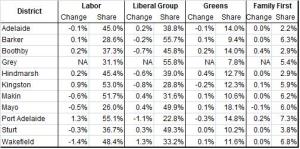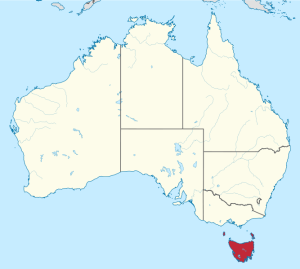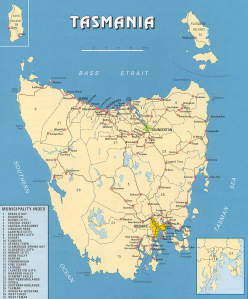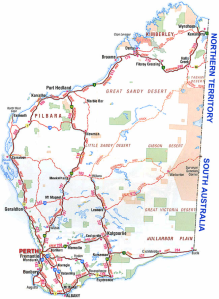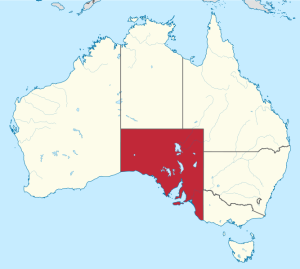Making preference flow distributions at the district level at this stage of the campaign is somewhat more art than science. The biggest blob of uncertainty now is the actual strength of the Palmer Union Party (PUP). Palmer is making a lot of noise and a lot of promises (namely to spend other people’s money and strengthen the mining industry in which he has a sizable financial interest) and he already has more than 100 candidates signed up. My guess at this stage is that his party is pulling roughly 5% nationally and some of what I have read about Palmer and his party’s candidates suggests that the party will be more popular in rural districts. There was some evidence of a higher percentage of Other voters in rural districts in my first-preference estimation and this may be the result of PUP. Palmer however has yet to indicate the preference flow he will suggest to his supporters.
There is of course the almost complete uncertainty at this stage as to the number of independents and upstream minor parties that will run in any given district. There is also uncertainty of the number of seats that the Christian Democrats will run candidates in. I have assumed for this estimation that the Family First party will run candidates in the same Queensland, Victoria, South Australia and Western Australia districts they ran candidates in in 2010 and that these candidates will win the same percentage of votes in these districts they won in 2010. I have assumed that Family First will not run candidates in New South Wales. I have also assumed that the Family First preference allocation percentages in each district where they run candidates will be the same as the average across all districts in the 2010 election. Since the Family First party’s supporters are part of the Other group of voters, I then stripped out the Family First votes out of the Other group and assumed a preference distribution to these parties of 30% Liberal group, 30% Labor, 30% Greens and 10% Family First. To simplify the analysis I assumed that the Family First party would finish fourth in every district in which they run candidates. Preference allocations of the Liberal group, Labor and Green parties were assumed to be the same as in the 2010 election.
With all of this uncertainty, I can only say that changes are likely to take place between now and the election as the minor party situation sorts itself out. With all of that said, my initial estimation is that the Liberal group will gain 22 seats, for a total of 95, while Labor will lose 20 seats, for a total of 52, in the upcoming election. I estimate that in 22 districts the two-party preference vote for the Liberal group and Labor will be between 47% and 53% and that 12 of these seats will be marginal for Labor and 10 will be marginal for the Liberal group. This suggests that the election could be a lot closer with a shift of several percentage points at the national level towards Labor:
National Estimation
| Liberal Group | Labor | Green | Independent | |
| Marginal | 10 | 12 | 0 | 0 |
| 2013 | 95 | 52 | 1 | 2 |
| 2010 | 73 | 72 | 1 | 4 |
A big shift is likely in the New South Wales delegation. Many of the races in New South Wales in 2010 were close and so a fairly small shift here will create a sizeable earthquake. I have the Liberal Group gaining 13 seats while Labor is set to lose 11. However, at this stage six Liberal group seats are marginal against only two for Labor. If the election is going to be closer than we now think, Labor will need to hold these potentially marginal Liberal group districts:
New South Wales Estimation
| Liberal Group | Labor | Green | Independent | |
| Marginal | 6 | 2 | 0 | 0 |
| 2013 | 33 | 15 | 0 | 0 |
| 2010 | 20 | 26 | 0 | 2 |
The Liberals are poised to make gains of four seats in Victoria at the expense of Labor and my call now is for an even 18-18 split in the state’s delegation. I also expect the single Green MP in Melbourne district to retain his seat in the upcoming election. This assessment may change if the overall support of the Greens continues to drop. With three Labor seats marginal against only one for the Liberals, there is some chance of Labor losing its majority in this state’s delegation:
Victoria Estimation
| Liberal Group | Labor | Green | Independent | |
| Marginal | 1 | 3 | 0 | 0 |
| 2013 | 18 | 18 | 1 | 0 |
| 2010 | 14 | 22 | 1 | 0 |
In the worst case scenario Labor could be reduced to just two seats in the Queensland state delegation while in a best case scenario at this point the Labor loss would be only two seats. Either way the born-again Prime Minister Kevin Rudd seems likely to retain his seat:
Queensland Estimation
| Liberal Group | Labor | Green | Independent | |
| Marginal | 1 | 3 | 0 | 0 |
| 2013 | 24 | 5 | 0 | 1 |
| 2010 | 21 | 8 | 0 | 1 |
My expectation at this point is that there will be no change in the party balance in Western Australia. However, my model suggests that all three Labor seats will likely be marginal and thus there is a chance at this stage of Labor being wiped out in the state:
Western Australia Estimation
| Liberal Group | Labor | Green | Independent | |
| Marginal | 0 | 3 | 0 | 0 |
| 2013 | 12 | 3 | 0 | 0 |
| 2010 | 12 | 3 | 0 | 0 |
My expectation is that South Australia will flip to the Liberal group but it is important to note that, at this stage, both seats expected to be gained by the Liberals are marginal. Thus, it is possible that there will no change in the party makeup of this state’s delegation after the upcoming election.
South Australia Estimation
| Liberal Group | Labor | Green | Independent | |
| Marginal | 2 | 0 | 0 | 0 |
| 2013 | 7 | 4 | 0 | 0 |
| 2010 | 5 | 6 | 0 | 0 |
I anticipate no change in the delegation makeup in Tasmania, the Capital Territory and in the Northern Territories. I anticipate that the Independent MP in Denison will retain his seat:
Tasmania Estimation
| Liberal Group | Labor | Green | Independent | |
| Marginal | 0 | 1 | 0 | 0 |
| 2013 | 0 | 4 | 0 | 1 |
| 2010 | 0 | 4 | 0 | 1 |
Capital Territory Estimation
| Liberal Group | Labor | Green | Independent | |
| Marginal | 0 | 0 | 0 | 0 |
| 2013 | 0 | 2 | 0 | 0 |
| 2010 | 0 | 2 | 0 | 0 |
Northern Territories Estimation
| Liberal Group | Labor | Green | Independent | |
| Marginal | 0 | 0 | 0 | 0 |
| 2013 | 1 | 1 | 0 | 0 |
| 2010 | 1 | 1 | 0 | 0 |


